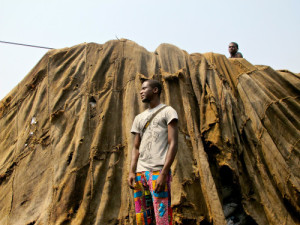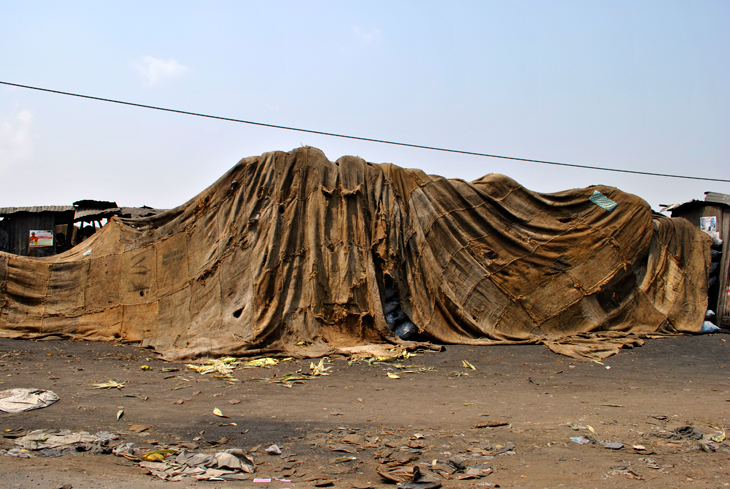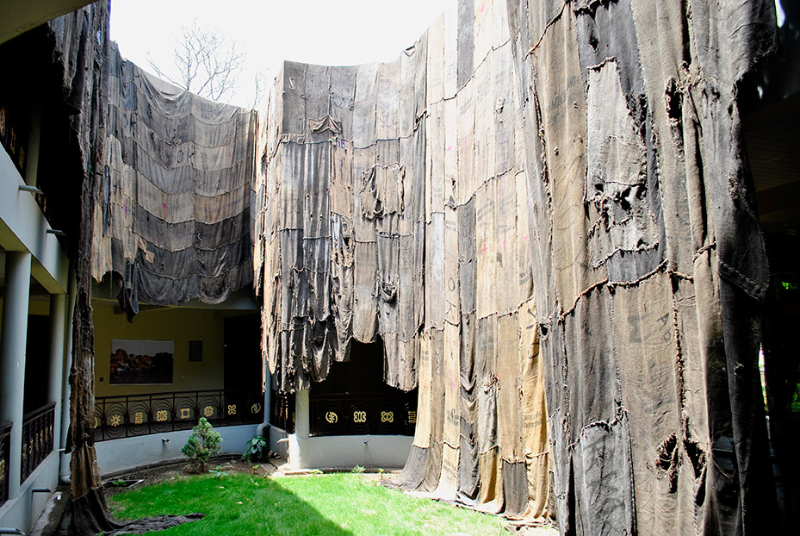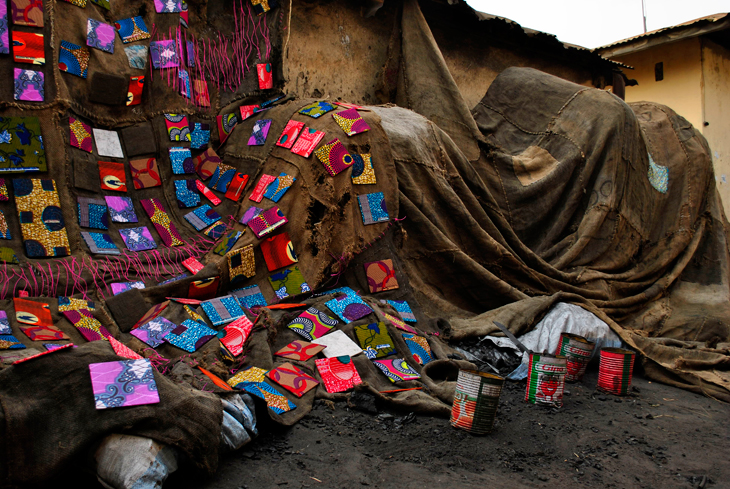
All works are: Untitled, 2013.
Nana Oforiatta Ayim of ANO, cultural platform in Ghana, about Ibrahim Mahama (quote from Contemporary And Magazine):
I’ve been working most closely with a young artist called Ibrahim Mahama, who is incredibly talented. He goes into marketplaces and buys up jute sacks initially used as cocoa sacks, but repurposed by charcoal sellers, transforms them into installations and goes back to the marketplaces to install them in the places he bought them. His work is very much about the transfer of value (of goods, but also in the art world) and about looking again, defamiliarising your environment.
When I first came across him, and also through conversations with lecturers at the art school there, I found out that many talented artists were going into things like banking or advertising, as there were no channels for artists to be sustainable within. I have worked in the art world for a while now, so it came about very organically when Ibrahim wanted to do an exhibition covering the art school museum in jute cloth, but could not raise the funding to do it, and also wanted help with the conceptualisation or curation of the show, that I agreed to collaborate with him, connected him with collectors, wrote about him to institutions like the Tate and the Saatchi, to provide him a bridge at that early stage of his career. The art world, like so many others, is so full of corridors and gatekeepers that an artist, especially one working and living in Ghana, could go their whole lives without ever being able to sustain themselves through their work.
I am a little weary of institutionalising this kind of ‘residency’ as I’m not keen on that particular play of power and never have been, the thought of myself as a purveyor whose word ‘makes or breaks’ an artist is a little sickening, as I don’t adhere to that notion of privilege. And yet, there is no denying that an email here, a phone call there, from someone who has already built a reputation through their work, can enable an artist like Ibrahim to have his art seen in galleries and museums internationally, enable him to have a residency in London, to sell and provide himself an income, to stay living in Ghana rather than moving abroad, to not compromise on his vision.
Nana Oforiatta-Ayim describes it thus:
“His epic installations move out onto the street, into market places, under abandoned railway bridges, rendering what is unseen, – layers upon layers of rubbish, degradation normalised and neglected by inhabitants and governments, -visible. “
It is clearly important to Mahama that these works don’t exist in a bubble: the negotiations needed for the collection of the materials, the production processes themselves and the installations reception are all significant.
“…each voice within that ‘public’ but private space determines the outcome of the installations.”
(Ibrahim Mahama)






